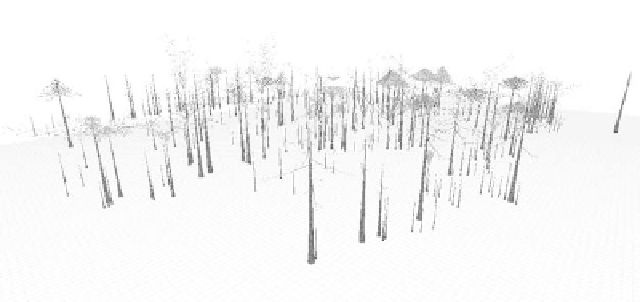Information Technology Reference
In-Depth Information
We considered six releases for JFreeChart (from 0.5.6 to 0.7.3), sixteen
for JEdit (from 3.0 to 4.3.2), and eight for JHotDraw (from 7.0.7 to 7.4.1).
Figure 7.5.
The forest for JEdit ver. 4.3
We selected these systems: (i) to verify whether the validity of our
proposal is affected by the kind of system used; (ii) because they have
been widely used in the past to assess the validity of tools for supporting
maintenance tasks; and (iii) because they present some differences in
features implemented.
Figure 7.5 shows the forest of JEdit 4.3. We may observe that there are
some classes that contain a high number of lines of comments. Among
these classes, there are some classes with a larger number of public
methods with a few attributes. On the other hand, there are a few classes
with a large number of attributes and a small number of public methods. In
the first case, these classes provide services to other classes, making it
easy to use services in which developers have commented the code. In the
latter case, the trees represent property classes. Analysis of the sixteen
releases of JEdit clearly shows that the size of the system increased
throughout releases. In particular, both the number of classes and packages
increased. The big picture of the forests did not show any particular
evolution patterns. However for JFreeChart we observed that the colour of
the foliage became greener and greener throughout its releases. This result
indicates that developers paid more attention to commenting the code in
the latest releases.

Search WWH ::

Custom Search